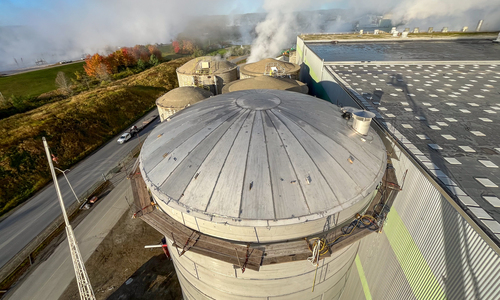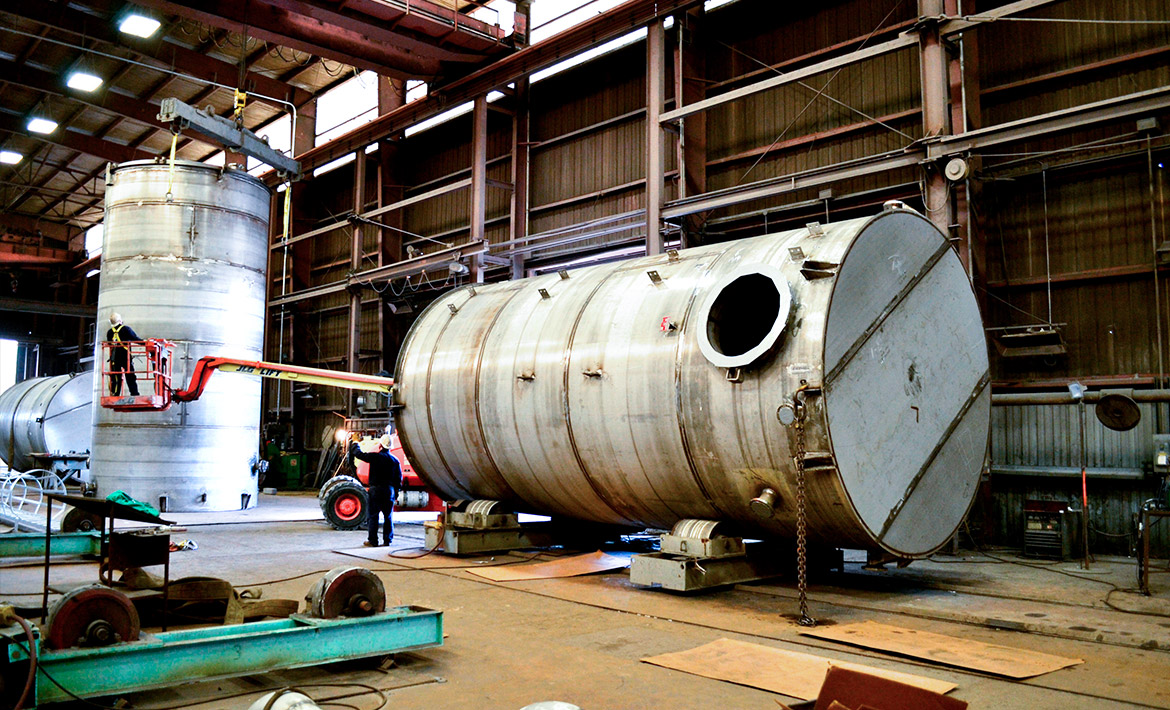How to Perform API 650 Welding Inspection Properly for Consistent Quality Outcomes
A Step-by-Step Consider the Installment Refine of Welding Examination Techniques
Welding examination is a crucial process that guarantees architectural honesty and safety and security. The installation of evaluation techniques involves a number of systematic steps, each integral to accomplishing reliable outcomes. From planning and tool option to conducting visual and non-destructive tests, each phase demands cautious attention. Comprehending these treatments can greatly improve quality assurance in welding projects. What obstacles arise in implementing these methods, and exactly how can they be successfully dealt with?
Recognizing the Significance of Welding Evaluation
Welding inspection is a crucial element of making certain architectural stability and security in building and production procedures. This technique involves assessing welded joints for flaws, making certain that they meet certain criteria and policies. By methodically determining weld high quality, examiners can identify problems such as splits, spaces, and incomplete blend, which can endanger the strength and resilience of structures.
The value of welding assessment prolongs beyond prompt safety problems; it helps prevent pricey failures and prospective hazards in the long term. Efficient evaluation methods foster conformity with market criteria, thus enhancing the general reliability of bonded parts. On top of that, a durable evaluation process adds to preserving the online reputation of manufacturers and contractors, as it guarantees clients of the quality of their projects. Eventually, comprehending the importance of welding assessment is important for promoting risk-free building techniques and guaranteeing the long life of essential infrastructure and items.
Selecting the Right Equipment for Examination
When choosing the appropriate tools for inspection, it is important to contemplate the certain needs of the welding procedure and the materials entailed. Various assessment methods, such as aesthetic, ultrasonic, and radiographic screening, require distinct devices customized to their special needs. For visual inspections, devices like multiplying glasses and calipers are critical for examining weld high quality. Ultrasonic testing requires specific equipment capable of sending and getting acoustic waves to discover inner flaws. Radiographic testing, on the other hand, uses X-ray or gamma-ray sources alongside sensitive film or electronic detectors to reveal incongruities.
Furthermore, individual safety equipment (PPE) is important to guarantee the safety of inspectors throughout assessments. Picking the right devices not just improves the precision of inspections yet also adds to the overall honesty and safety of the welding project. Consequently, a comprehensive understanding of offered devices and their applications is important for reliable welding evaluation.
Preparing for the Evaluation Process
Prior to starting the assessment procedure, it is necessary to develop a complete plan that lays out the scope and purposes of the assessment. This strategy needs to include certain standards that define what makes up acceptable high quality in the welding job being evaluated. Determining the relevant codes and requirements is crucial, as they will certainly assist the inspection standards and techniques.
In addition, employees entailed in the inspection has to be properly trained and licensed in welding examination techniques to assure integrity and accuracy. A checklist can be advantageous in organizing the different facets of the evaluation, varying from devices readiness to environmental problems that can influence the assessment.

Logistical considerations such as organizing, available resources, and communication between group participants need to be attended to. By preparing systematically, assessors can enhance the efficiency of the evaluation and make certain that all vital aspects are appropriately thought about prior to waging the evaluation itself.
Carrying Out Visual Evaluations
Conducting aesthetic assessments is a vital step in the welding examination process, requiring cautious preparation to assure efficient evaluation. Examiners must know with essential issue signs that can signal prospective issues in weld high quality. By concentrating on these elements, one can boost the overall integrity of the evaluation end results.
Preparing for Visual Examination
Visual assessment acts as an important primary step in the welding assessment process, ensuring that any kind of potential problems are recognized early (API 650 Welding Inspection). Proper preparation is crucial for effective visual assessment. Inspectors ought to start by assessing relevant paperwork, consisting of welding treatments and specifications, to comprehend the task requirements. They should collect essential devices, such as their website magnifying glasses, flashlights, and appropriate personal safety devices (PPE) A thorough examination of the evaluation area is critical; inspectors must verify it is cost-free and clean of obstructions. In addition, it is essential to develop suitable illumination problems to improve exposure of welds. By taking these primary actions, assessors can develop a setting helpful to determining disparities and ensuring the honesty of the bonded frameworks
Secret Defect Indicators
A complete understanding of crucial flaw signs is necessary during aesthetic examinations to ensure the high quality and safety of welded joints. Inspectors ought to concentrate on specific indications such as fractures, porosity, damages, and incomplete fusion. Cracks may appear as sharp lines and can compromise structural stability. Porosity materializes as small holes that can compromise weld toughness. Undercuts, which are grooves along the weld edge, can cause anxiety concentration. Insufficient fusion shows that the weld metal did not correctly bond with the base product, causing a weak joint. By methodically determining these problems, inspectors can identify compliance with sector requirements and improve the total integrity of welded structures, ultimately adding to much safer operational conditions.
Implementing Non-Destructive Examining Methods

Numerous non-destructive screening (NDT) techniques are important to guaranteeing the honesty of bonded frameworks without endangering their capability. These approaches enable inspectors to evaluate weld quality and discover issues without creating damage to the products being tested. Typical NDT strategies include ultrasonic screening, radiographic testing, magnetic bit screening, and color penetrant testing. Each technique offers a particular objective, dealing with various kinds of flaws such as fractures, porosity, or insufficient fusion.
Executing NDT strategies calls for a systematic approach, beginning with choosing the proper approach based upon the materials and the nature of the weld. Training personnel in these strategies is essential for exact results. Additionally, developing clear treatments and standards guarantees consistency throughout the inspection process. By integrating NDT right into the welding assessment workflow, companies can improve the reliability of click here to find out more their products while lessening potential dangers connected with architectural failings. This positive technique inevitably adds to keeping safety and security and top quality criteria in bonded buildings.
Recording and Examining Assessment Outcomes
Reliable paperwork and analysis of inspection results are essential components of the welding inspection process. Accurate documents of examination searchings for offer as a referral for high quality assurance and compliance with sector requirements. API 650 Welding Inspection. Examiners ought to utilize organized types or digital platforms to log details such as the type of weld, examination approaches utilized, and any disparities determined during the evaluation
Comprehensive evaluation is important as soon as data is collected. This includes comparing outcomes against developed criteria to recognize patterns or repeating concerns. Statistical devices might be utilized to quantify problems and assess their influence on overall weld high quality.
Efficient interaction of findings to pertinent stakeholders is vital. Recaps and reports should be concise and clear, highlighting essential understandings and recommendations for restorative activities. By systematically examining and recording assessment results, organizations can cultivate continual improvement in welding methods and boost product stability.
Regularly Asked Inquiries
What Qualifications Are Needed to Come To Be a Welding Inspector?
To become a welding assessor, one generally needs appropriate accreditations such as AWS CWI, in addition to experience in welding practices, knowledge of welding codes, and efficiency in assessment methods to assure quality and security requirements.
Just How Frequently Should Welding Inspections Be Conducted?
Welding assessments need to be performed regularly, generally after each weld is completed, and regularly throughout jobs. Aspects such as job complexity, industry standards, and regulatory needs can affect the regularity of these assessments.
What Is the Expense of Welding Evaluation Solutions?
The expense of welding evaluation services differs substantially based on elements such as project dimension, intricacy, and location. Normally, costs range from $100 to $150 per hour, with added charges for specialized testing and qualifications.
Are There Certifications for Welding Inspectors?
Yes, there are numerous accreditations for welding examiners, consisting of those used by the American Welding Society (AWS) and the International Institute of Welding (IIW) These qualifications guarantee assessors have the necessary abilities and understanding for reliable evaluations.

Just how Do I Choose an Evaluation Company?
To choose an assessment solution company, one must assess certifications, experience, sector credibility, and client testimonials. Furthermore, comparing service offerings and rates can aid guarantee the chosen supplier meets certain task needs efficiently.
Furthermore, workers involved in the assessment has to be properly trained and accredited in welding assessment methods to guarantee dependability and accuracy. Carrying out visual assessments is a crucial step in the welding assessment procedure, needing cautious prep work to ensure reliable evaluation. Visual evaluation serves as a crucial first step in the welding assessment procedure, ensuring that any type of prospective defects are identified early. Efficient paperwork and analysis of evaluation results are essential parts of the welding examination procedure. Welding evaluations should be conducted routinely, usually after each weld is completed, and their website periodically throughout jobs.